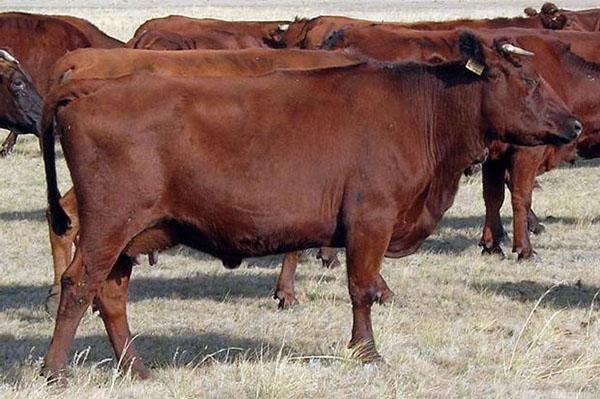Choosing a breed of cows for a personal subsidiary farm
 Keeping a cow is a long-term process. Depending on the direction of the breed, the animal will bring you the first profit in 1.5-2 years. Breed selection is a very important preparatory step for keeping cattle. According to the direction of keeping, all breeds of cows are divided:
Keeping a cow is a long-term process. Depending on the direction of the breed, the animal will bring you the first profit in 1.5-2 years. Breed selection is a very important preparatory step for keeping cattle. According to the direction of keeping, all breeds of cows are divided:
- for meat;
- meat and dairy;
- dairy.
Livestock breeders distinguish one more direction of keeping cattle: breeding. It is aimed at breeding and selling good offspring. Mainly large industrial farms are engaged in breeding stock for sale.
Registration of all veterinary documents for obtaining the status of a breeding farm is an expensive procedure. It is necessary to carry out a number of analyzes and properly equip the barn. Consider several breeds of cattle.
Red steppe breed
Red steppe cows are meat and dairy animals. This breed is ideal for breeding. These cows give birth to strong offspring with strong immunity. Calves have great genetic potential and gain muscle mass very quickly.
The first milk from these cows can be obtained after two years of keeping. The first fertilization is carried out naturally at the age of 18 months. Calving in red steppe cows is very easy.
Breed of Kholmogory cows
Kholmogorsky cattle belongs to the dairy direction of keeping. Cows of this breed are slightly smaller than cows of the red steppe. Accordingly, they give less milk, but the consumption of feed for one liter of milk is much less.
The second advantage of the Kholmogory breed is that cows respond very well to free grazing. With this method of keeping milk yield doubles.
Succulent feed helps to increase milk yield and accelerate muscle gain. In order to increase the fat content of the milk, the cow is fed with hay and grain crops.
Breed Simmental cows
Simmental cows are meat and dairy cows. They gain muscle mass very quickly, but milk yields in young heifers are low compared to the “red steppe breed”.
Simmental cows are raised mainly for milk production. Yields increase after the second and third calving.
A significant proportion of the calves are bulls. They can be slaughtered after two years of keeping.